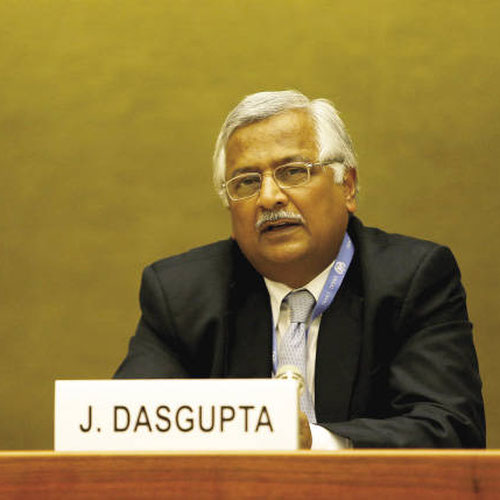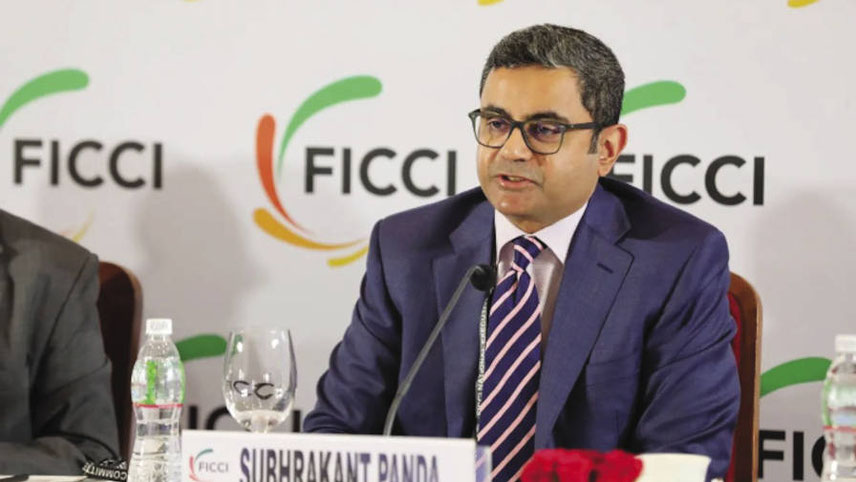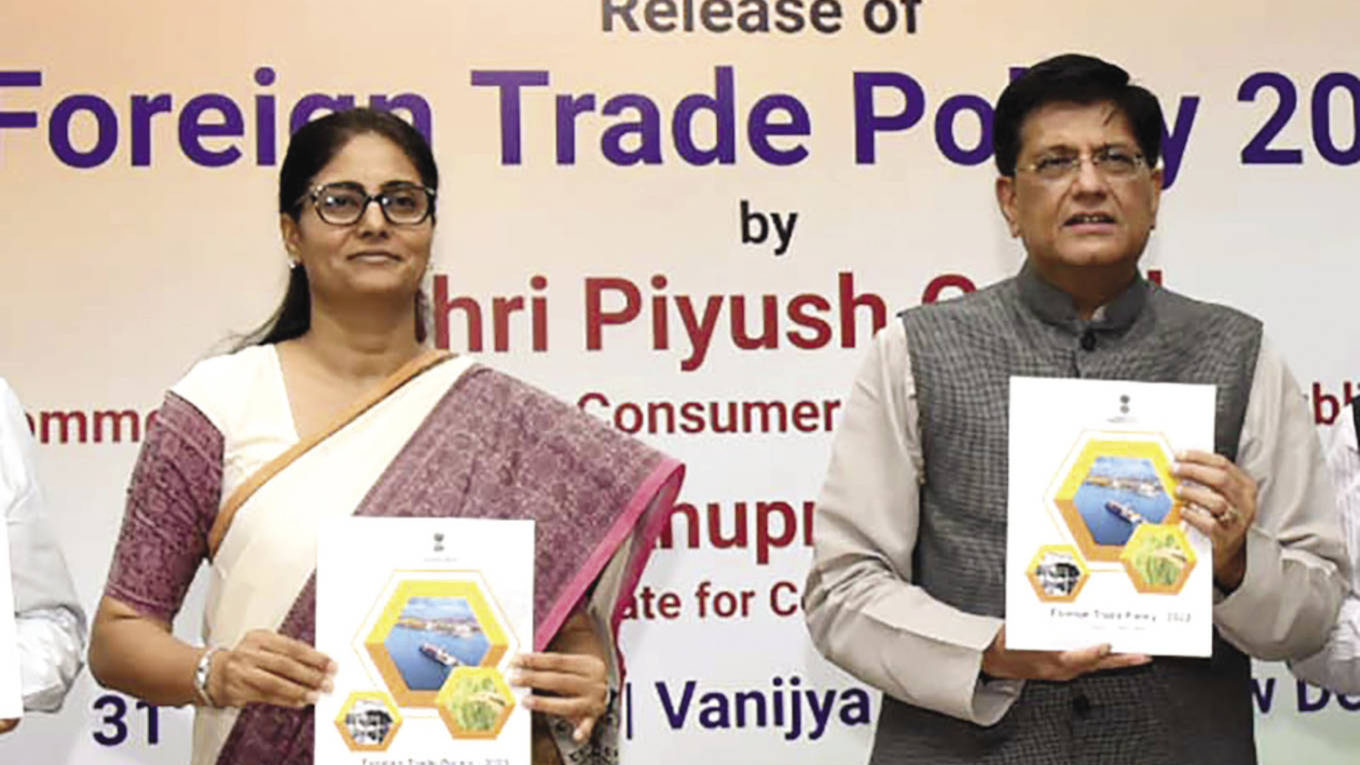-

The $2 trillion export target goal by 2023 is definitely achievable as the new foreign trade policy has brought strong focus on new sectors. In fact, the target could be achieved even before time
Ajay Sahai, DG, FIEO
Global trade trends
Speaking of how global trade trends will pan out, Ajay Sahai, director general & CEO, Federation of Indian Export Organisations (FIEO), says that global trade slowed down in the second half of 2022. According to him, demand has come down and prices of inputs have reduced, which in turn is impacting exports. He expects that while global trade might recover, overall challenges are likely to continue.
Indian industry is hopeful that better numbers will come in from travel tourism and medical tourism next year. FIEO’s Sahai says global trade is moving towards the tech sector and added that a significant portion of PLI will go into exports. He suggests that the focus should be on pushing the merchandise sector and realignment of the value chain.
In such unpredictable times, the Modi government is optimistic that the facilitation to trade in Indian rupee will open up new markets for India. Hence, it will focus on greater use of the rupee in international trade.
“Lots of countries are facing currency shortages in terms of hard currency,” explains Jayant Dasgupta, former Indian envoy to WTO. “In order to provide them with the benefits of imports from India, we are extending the facilitation to trade in Indian rupee. The issue is they will have to pay in terms of either barter trade or they could pay us in terms of their own exports to India or in terms of a third currency. Overall, I think the facilitation to trade in Indian rupee will benefit and open up new markets for India.”
Indeed, the commerce ministry led by Piyush Goyal, encouraged by the rupee-rouble trade with Russia for oil, has made rupee trade the centre-piece of the new FTP. The ministry feels that there is no reason why its success cannot be replicated across sectors and countries. This hawkishness will impress the government’s domestic fan-base but some in Capitol Hill may see it as an attempt to break free of dollar hegemony on the trade front. One needs to just recall how the rupee trade with Iran, when it was in the US doghouse, was frowned upon by Washington.
The FTP in fact announces not only to Russia but to the entire world that it is open to making rupee trade agreement with Russia the template for the entire world, especially with countries either finding it difficult to muster sufficient greenbacks to bankroll their exports or simply resenting the undeserved dollar hegemony.
However, as a former trade diplomat points out, “Whether the commerce ministry’s moves even lead to a full-scale adoption of the rupee-rouble trade, hitherto embraced sporadically and limited to cheap energy supplies, remains to be seen.”
Rupee-rouble exchange
Rupee-rouble trade, as the name suggests, is a settlement arrangement where a Russian bank keeps enough rupee deposits to pay off the Indian exporters to Russia in that currency. Correspondingly, on the flip side, an Indian bank keeps enough Rouble deposits in Russia to pay for Indian imports. That makes dependence on the dollar unnecessary.
-

Overall, I think the facilitation to trade in Indian rupee will benefit and open up new markets for India
Jayant Dasgupta, Former Indian envoy to WTO
The rupee-rouble exchange is not new. In 1953 Indo-Soviet trade agreement contemplated all payments in settlement of imports and exports between the two nations being made in rupee. But this arrangement was dropped in 2005 when it resulted in Russia being saddled with enormous quantity of rupee what with India being the net importer.
However, the two nations once again embraced rupee payment for Russian export of S-400 Triumf air defence system in 2019 with the deal being for $5-plus billion to escape sanctions by the US under its Countering America’s Adversaries Through Sanctions Act (CAATSA). Rupee-rial agreement with Iran similarly was to escape the American ire but had to be abandoned when the Trump administration extended the bar on its currency being used to a complete bar on import of oil itself from the Persian Gulf nation.
However, Russia has played ball with India readily, because it was put into the doghouse by the US when hostilities broke out between Russia and Ukraine. It was ousted from the SWIFT international payment settlement mechanism, and it happily accepted the Indian offer for rupee trade. That may not be the case with other countries which are allies of the US.
Piyush Goyal, while waxing eloquence over achieving the $2 trillion export target by 2030, said goods exporters must work harder. He has a point. iPhone exports from India have been on the increase thanks to production-linked incentive (PLI) scheme but one is not sure if the same template would be followed by Harley Davidson, the motor cycle major. Tesla has showed disinclination to set shop in India. Most of the popular brands prefer to export to India and other nations rather than set shop in India and elsewhere.
The ministry has rationalised the export performance threshold for recognition to exporters through status holders. This is expected to enable more beneficiaries to achieve higher recognition and reduce transaction costs for exports.
For a one-star status house category, the export performance threshold remains unchanged at $3 million. For a two-star status house category, the export performance threshold has been revised from $25 million to $15 million. Similarly, for the three-star status house category, the threshold has been halved to $50 million, while for the four- and five-star status house category, new thresholds have been significantly reduced to $200 million and $800 million respectively.
An applicant shall be categorised as status holder upon achieving export performance as indicated in laws. The export performance will be counted on the basis of FoB value of export proceeds realised during current plus previous three years (taken together). For Export House Status, export performance is necessary in at least two out of four years.
Will subsidies help?
Trade experts believe that FTP also makes a seminal and paradigm change by foreswearing incentives and instead plumping for remission of taxes and duties on exports on the rational ground that such taxes and duties should not be exported. Bagging export orders isn’t easy in the rough and tumble of international trade with undervaluation of currency as allegedly mastered by China and dumping distorting the picture.
FTP has done well to make life easier for the Indian exporters by sparing them of tax burden on the goods exported so that their quotations are competitive. Post-exports reimbursements and incentives obviously did not serve to make Indian exports competitive in the past.
-

By doing away with the sunset clause and end-period, the FTP will allay apprehensions of the exporters and importers
Subhrakant Panda, President, FICCI
Indeed, the strategy of promoting exports through subsidies has not really given the desired results. Besides, India has moved more into an interconnected world, where such subsidies are actually not even permitted under the WTO. There have been bad instances that India has been dragged before the WTO on export subsidies.
The Modi government has been following an approach where it reimburses the taxes or cess or duties that are notified on the product by the states. As far as the Central government is concerned, usually most products are under the GST (Goods and Services Tax) and it automatically gets refunded when the goods are exported.
If there is any other tax which is levied on any export product, which is not marketable or reversible in the form of return, that is given back to the exporters under the RoDTEP scheme.
As for the objective of reaching $2 trillion exports by 2030, it is an ambitious one given the earlier trajectory. In the past four years, the average annual growth rate for exports has been 9 per cent. Prior to that, in a good year, it was 12 per cent and, even in 2022-23, it has been at the same level of growth.
However, if we are to reach $2 trillion by 2030, it means achieving 15 per cent annual growth rate for 7 years. That target seems more ambitious than realistic, considering how even the WTO has warned of a contraction in world trade. Making the Indian rupee a key facilitator to prise open new markets is a noble thought. How far the US will perceive this as an assault on the greenback remains to be seen.





































